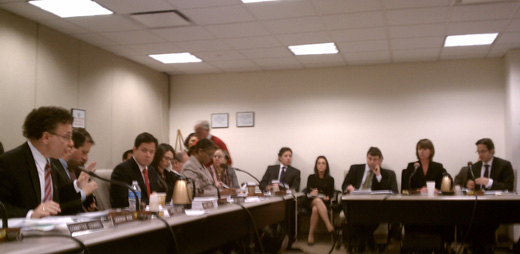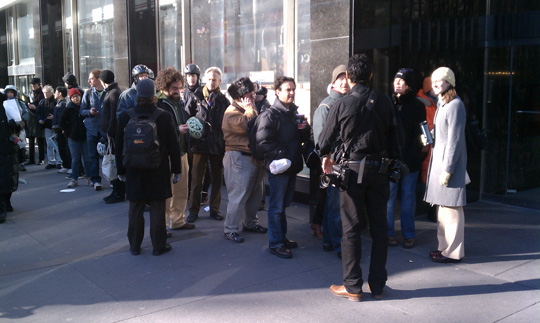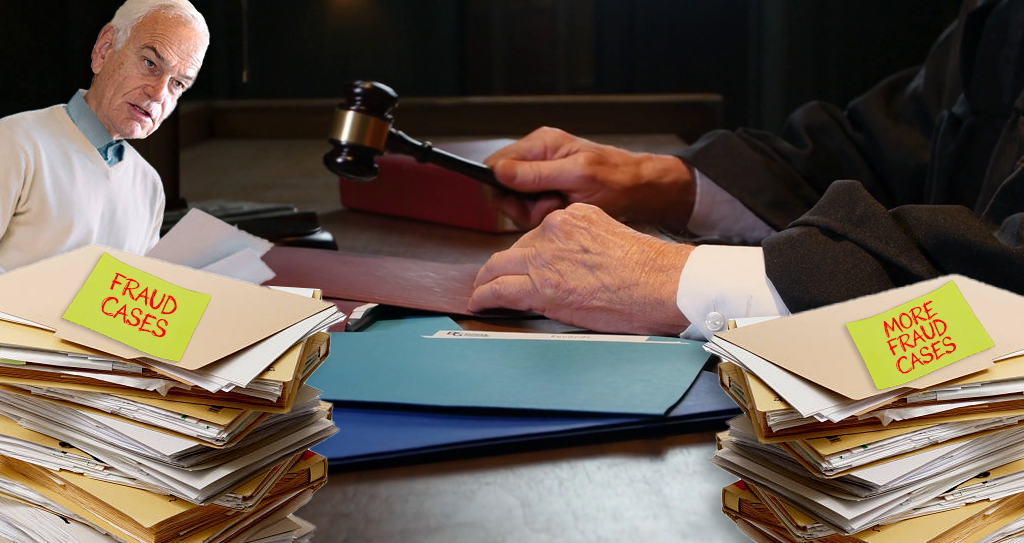
The line to testify at today's Transportation Committee hearing on New York City bike policy was snaking outside into the biting cold well before the 10:00 a.m. start time. More than 70 people signed up to speak, filling up two hearing rooms at 250 Broadway.
The first few hours of the hearing, however, belonged to committee members, who peppered Transportation Commissioner Janette Sadik-Khan with questions about an exhaustive array of bike-related topics: how DOT decides to install bike lanes, how they measure the success of bike lanes, how much bike lanes cost, how the city intends to discourage rule-breakers on bikes, and yes, whether cyclist registration should be required.
"Nobody disagrees that using more bicycles is a good thing, but in a city where traffic is horrendous and finding a parking space is difficult, bike policy is all about tradeoffs," committee chair Vacca said in his introduction. "Too many people are starting to get the impression that bike policy is about getting them to give up their cars."
All of Streetsblog's editors and reporters are gathering for our annual strategy session this afternoon, so unfortunately I couldn't stay for the full hearing. But here are a few quick hits that will hopefully give a sense of where certain Council members stand on bike policy:
- Vacca had the mic longer than other committee members and had the longest exchanges with Sadik-Khan. One question about the cost of building bike lanes yielded an answer that will be of particular interest to Streetsblog readers. All of the current DOT's bike projects combined have cost a total of $8.8 million, including analysis, design, outreach, and construction, Sadik-Khan said. When you factor in the 80 percent federal match, the city has spent less than $2 million from its own coffers on the major expansions to the bike network we've seen the last few years.
- Queens representative Peter Koo, who represents Flushing, said, "In my experience, I hardly see any people using the bike lanes. Meanwhile, the motorists have no place to park, and business people have no place for deliveries." Statistics laying out the substantial bicycle volumes on certain streets -- in the range of 10 to 20 percent of peak hour traffic on several corridors, Sadik-Khan said -- did not sway him. "Some parts of the city, downtown areas, don't need bike lanes," he said. "They should go in suburban areas."
- Southern Brooklyn's Lew Fidler said residents in his neighborhoods will not commute by bike and questioned the utility of long-term planning when it comes to bike infrastructure. He professed not to understand the DOT priority on building bike lanes that would yield a more connected, cohesive network of safe cycling routes. He also asked DOT to come back and install a bike lane along recreational routes by the water in his district.
- Tish James asked DOT to expand the bike network in Brooklyn beyond the downtown core and neighboring communities, into central and southern Brooklyn. "The objections of my colleagues notwithstanding, I can think of no better way of addressing the sedentary lifestyle than expanding the bicycle network." She also asked for more physically protected lanes in Brooklyn.
- The first and, I believe, only council member to bring up the idea of mandatory registration for cyclists was David Greenfield, a freshman who represents parts of Borough Park, Midwood, and Bensonhurst.
- East Side representative and occasional cyclist Daniel Garodnick asked how pedestrians' perception of safety on streets with new bike lanes can be addressed. "Even before bike lanes, the number of complaints about riders who do improper things is high," he said. He welcomed DOT's new "Don't be a jerk" education campaign, but he'd like to see more from the police. "I hope DOT will encourage NYPD to do proper enforcement of the rules, so that as we expand the bike network, people will use it properly," he said.
- Another East Side rep, Jessica Lappin, took a harder line on cyclist enforcement. "What people are doing is breaking the law and putting lives at risk," she said. "I've heard countless stories of people who've been hit, killed, the list goes on and on."
There were several camera crews in the cramped hearing room. Can't wait to see how the coverage shakes out from this one.
If you want to report from the latter parts of the hearing or you have testimony that you'd like to share, drop us a line in the comments or send us an email at tips@streetsblog.org. You can also get lots of good snippets of testimony from the Twitter feed of Streetsblog reader BicyclesOnly.






